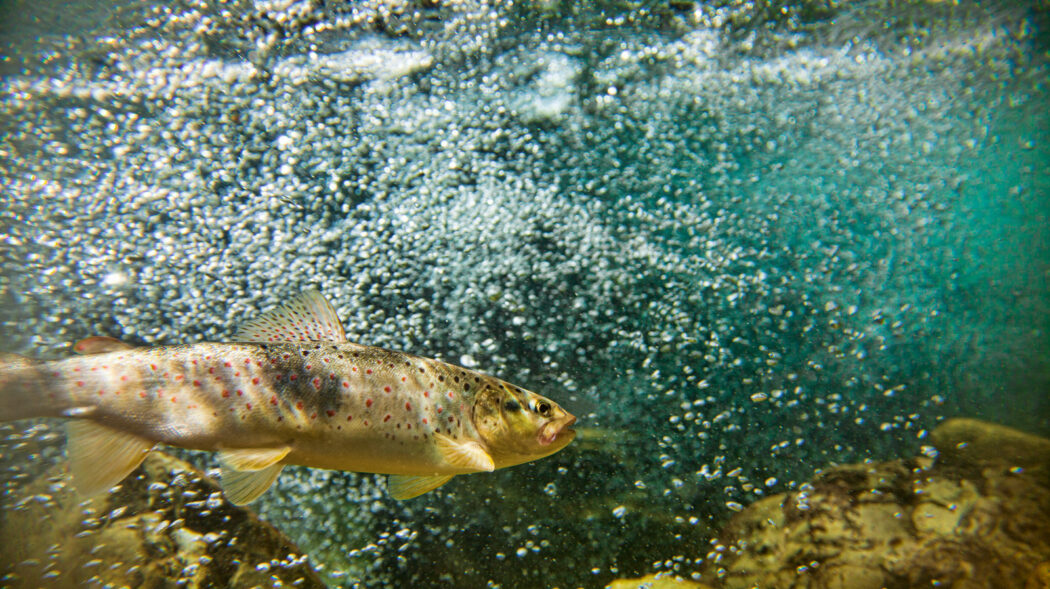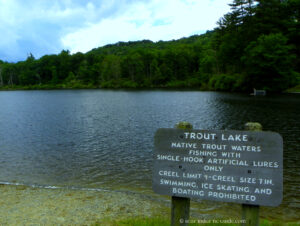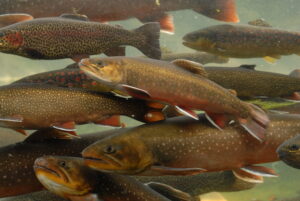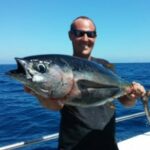How to Catch Trout in a Lake: A Beginner’s Guide

Trout fishing is one of the most popular forms of fishing, especially in North America. Catching trout in lakes is always a fantastic option, and thus these lakes are often supported by stocking programs. They prefer large, deep lakes with cold water, but chances are that if you’re reading this guide then you’ve already got a destination in mind.
By the way, if you also want to know how you can catch a buffalo fish, we have a guide here about that too.
Get a Plan Together!
 First, you need know where you’re going and how big you expect the fish to be. Trout can weigh over 35 pounds, so if you know you’re going to a lake where there will be some huge fish, be sure to grab a heavier rod. I’d recommend an open faced reel with thin line, which allows you to cast into deep waters fairly easily. Finally, top it off with either number 6 or 10 hooks.
First, you need know where you’re going and how big you expect the fish to be. Trout can weigh over 35 pounds, so if you know you’re going to a lake where there will be some huge fish, be sure to grab a heavier rod. I’d recommend an open faced reel with thin line, which allows you to cast into deep waters fairly easily. Finally, top it off with either number 6 or 10 hooks.
If you want to plan a deep sea fishing trip, check this article.
Think Deep Thoughts

The depth is important for catching trout because they like cold waters. Thus, depending on the time of the year that you go trout fishing, you may need to adjust what depth you’re fishing at. This is trial and error of course, and I’ve found that in spring you want to be at around 20 feet, and up to 45 feet as the weather gets warmer. They prefer water that’s around 53 degrees F, so you might have to do a bit of work. During the summer most of the water is warm, so if there’s cold spots where spring water is pumped into the lake, that’s where you want to be.
Pro Tip! Investing in a depth finder or fish finder can greatly improve your chances of catching some monster trout!
Lures/Baits

Trout generally eat native fish and plant life, so your plan of action is to ask around the local bait and tackle shops as to what kind of lure you should be using. Weightless lures and spinners are generally consistent, and if you can get a lure which closely mimics their local feeding patterns, that’s even better. If you’re using live bait, night crawlers and minnows are usually pretty good. This can change by location, so asking the locals what’s been working lately can often lead to some great advice. A spinner and some night crawlers can be all you need for a live line all day! A great way to make a moth-like lure is to 3 balls of power bait together. Here’s a quick video showing you how!
The Odds are in Your Favor

Because trout love the cold depths, they often can be found near each other even though they’re not schooling fish. If you catch one, there’s bound to be more nearby! Also keep in mind that if you’re not catching any trout, it’s because there’s none nearby. If you’re not having any luck, try patrolling the lake for a while and see if you can get a nibble.
Pro Tip! Always be watching the line. Big trout will bite the bait and then slowly swim away, while small trout will swim away furiously.
That’s our guide on trout fishing, hopefully you now know how to catch trout in a lake, or at least picked up a couple tips! As with any time you go fishing, remember that patience is key, and whenever you’re reeling in you should do it slowly and keep the tip of the rod above your head. Happy fishing!
As an Amazon Associate, Fishermen's Angle earns from qualifying purchases. We get commissions for purchases made through links in this post.
